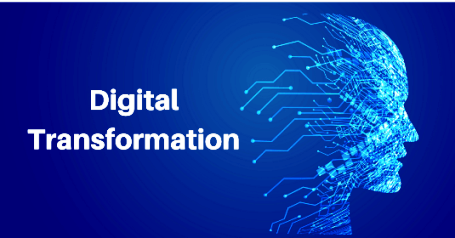By Oladipupo Adeosun
IT leadership plays a pivotal role in guiding organizations through the complex process of digital transformation. A well-structured digital transformation roadmap, combined with effective leadership, can ensure that this journey is not only successful but also delivers long-term value.
RELATED: Digital transformation key to navigating ongoing disruption
Here are key considerations for IT leadership in the context of digital transformation roadmaps:
1. Vision and Strategy:
– Start with a clear vision of what digital transformation means for your organization. Define the strategic goals you aim to achieve through this transformation, such as improving customer experiences, increasing operational efficiency, or entering new markets.
2. Leadership Buy-In:
– Secure buy-in and support from senior leadership, including the CEO and the board of directors. Leadership alignment is crucial for securing the necessary resources and ensuring that the entire organization is committed to the transformation journey.
3. Cross-Functional Collaboration:
– Foster collaboration between IT and other business units. Digital transformation often requires a cross-functional approach, with IT leaders working closely with marketing, operations, finance, and other departments.
4. Technology Stack Assessment:
– Evaluate your existing technology stack. Identify legacy systems that may need modernization or replacement to support digital initiatives. Ensure that your technology infrastructure can support the desired changes.
5. Customer-Centric Approach:
– Place the customer at the centre of your digital transformation efforts. Understand customer needs, preferences, and pain points, and design digital solutions that enhance their experiences.
6. Data-Driven Decision-Making:
– Embrace data analytics and business intelligence to drive informed decision-making. Use data to identify opportunities, track progress, and measure the impact of digital initiatives.
7. Agile and DevOps Practices:
– Adopt agile methodologies and DevOps practices to accelerate development and deployment cycles. This enables quicker adaptation to changing market conditions and customer demands.
8. Talent Development:
– Invest in talent development and upskilling. Ensure that your IT team has the skills required for emerging technologies and digital tools. Consider hiring external expertise if needed.
9. Change Management:
– Implement a robust change management strategy to address the cultural and organizational shifts that come with digital transformation. Communicate the reasons for change, provide training, and create a supportive environment for employees.
10. Risk Management:
– Develop a risk management strategy to anticipate and mitigate potential challenges and setbacks during the transformation process. This includes cybersecurity risks, compliance issues, and operational disruptions.
11. Iterative Approach:
– Break down the digital transformation roadmap into smaller, manageable projects or phases. This allows for continuous improvement and the ability to pivot based on feedback and changing priorities.
12. Key Performance Indicators (KPIs):
– Define clear KPIs and metrics to measure the success of digital transformation initiatives. Regularly track and report on progress toward these goals.
13. Customer Feedback Loop:
– Establish mechanisms for collecting and analyzing customer feedback. Use this feedback to refine digital solutions and ensure they align with customer expectations.
14. Vendor Partnerships:
– Collaborate with technology vendors and partners that can provide expertise and solutions aligned with your digital transformation goals.
15. Scalability and Flexibility:
– Design your digital solutions with scalability and flexibility in mind. Ensure that they can adapt to evolving business needs and accommodate future growth.
16. Continuous Learning:
– Stay informed about emerging technologies and industry trends. IT leaders should be lifelong learners who can guide their organizations through ongoing digital evolution.
Digital transformation is not a one-time project but a continuous journey. Effective IT leadership involves setting the direction, aligning stakeholders, and providing the guidance and support needed to navigate this journey successfully and drive long-term business value.
Oladipupo Adeosun: Head, Information Technology – E-Business (Fintech | Cyber Security | Penetration Tester)































